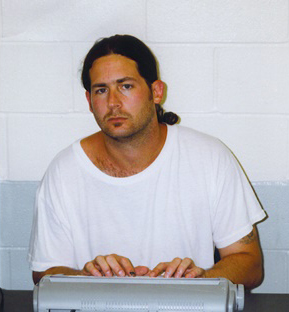George “Boy George” Rivera wasn’t one to go with the flow. Instead of selling crack in the 1980s, in Manhattan and the South Bronx, he flipped the script, selling vials of heroin he called “Obsession.” During the summer of 1987, according to court records, Rivera’s “highly structured, street-level heroin distribution organization” moved $100,000 worth of the drug per week, and dragged countless youths into addiction while propelling the flamboyant 19-year-old Puerto Rican to multimillionaire status.
Using a corporate front, Tuxedo Enterprises, Rivera modeled his drug empire after a legal entity. Keeping with the business-inspired theme, he offered cash bonuses, gifts and Disney World vacations to keep his dealers loyal. “He was ahead of his time,” says Don Diva Magazine editor-in-chief Tiffany Chiles, referring to the drug entrepreneur’s youth and business acumen. “To operate on that level as a young man took a great amount of thought, action, vision and determination.” Far from being destined for the Fortune 500, though, the self-styled CEO had been linked to 12 homicides by 1988, and the feds were actively building their case.
WHY YOU SHOULD CARE Because when you’re behind bars, “trick or treat” takes on a whole new meaning. Seth Ferranti is a writer, comic book creator and filmmaker. For Halloween, people dress up as prison inmates, mobsters or ax murderers, but in prison, these aren’t characters — they’re your neighbors. And while Halloween comes once a year in the real world, in prison it’s every day. Because drugs, gangs and violence rule the day, and if you let your guard down or show weakness, it can result in your demise. When I entered prison as a 22-year-old kid facing a 25-year sentence for a first-time, nonviolent LSD offense, I put on a mask. It wasn’t Batman or Chewbacca — my mask had dark brown curly hair, blue eyes, fair skin and a slightly crooked nose. It was a mask that made me look just like me — only tougher. And I made sure to put it on every day for survival. Prison felt like Halloween, only a Halloween where you hope you don’t get any treats. Because treats are tricks, and they could both be detrimental to your health. If someone leaves a Snickers bar on your bed, it means they want to make you their “punk” — a man who becomes another man’s woman. And usually it’s not consensual. I definitely didn’t want any treats and I was always on the lookout for tricks, which inevitably led to violence. Like the time one of my homeboys hid another prisoner’s radio. He thought it was funny, but in the pen, that’s a big no-no. When the dude couldn’t find his radio, he thought someone stole it, and when he found out my homeboy had picked it up, he smashed him with a “lock in a sock,” busting open my homeboy’s head right to the skull. That was a scary Halloween.
I WORE THE MASK FOR SO LONG, IT GREW DIFFICULT TO DIFFERENTIATE BETWEEN THE IMAGE I PROJECTED TO EVERYONE INSIDE THE BELLY OF THE BEAST AND THE PERSON I REALLY WAS.
A 14-count indictment, filed in June 1990, charged Rivera and his crew with a heroin conspiracy, revealing a world of lavish parties, limousines, women and unbelievable wealth. From the poverty-ridden streets of the South Bronx to ski weekends in the Poconos, Rivera had amassed a fortune. He owned commercial real estate and a mansion in Puerto Rico, a stash house in Normandie Court on the Upper East Side — where he stored garbage bags full of money — and a fleet of customized cars equipped with 007-style gadgetry to elude law enforcement.
“The press called me the Puerto Rican James Bond because of the gadgets in my car,” Rivera says, adding that the law would still be chasing him if he had made it to one of his cars the night of his arrest. One Mercedes had $50,000 in upgrades, including a license plate that slid out of view, radar detectors, a strobe light that blinded anyone tailing him, a device that squirted oil from the tailpipe, a switch that, when flipped, triggered a spray of nail-like tacks from the trunk, and concealed compartments in the door panels and floor for hiding weapons, drugs and cash.



